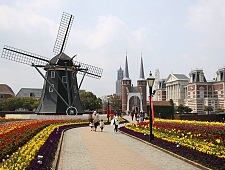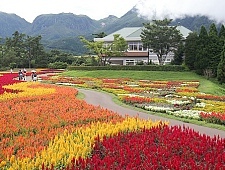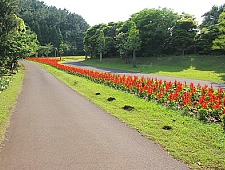Posted by
hasmik 年月日 Jun 28, 2015 in
文化,
日本Seasons are a main theme in the Japanese culture. Flowers are like mirrors to the seasons, reflecting the passage of time. Fittingly, flower viewing is a very popular activity in Japan as most prominently seen in the annual festivities surrounding the cherry blossoms, but not limited to them.
The following chart shows the approximate blooming periods for some of the most popular flowers in Japan. One point to note is that because Japan extends north to south for some 3500 kilometers, a particular flower species might blossom at differing times across regions with varying climate. The chart serves as a rough reference for the country in general. It is recommended to check on details for specific locations before visiting.

Popular types of flowers
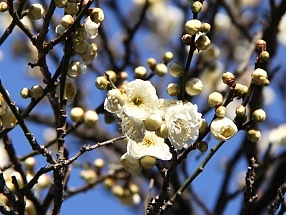 Plum Blossoms (Ume)Typical Season: Mid February through March (Tokyo) Plum Blossoms (Ume)Typical Season: Mid February through March (Tokyo) |
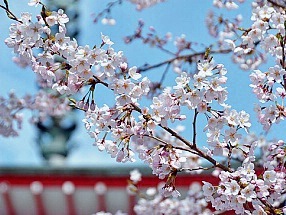 Cherry Blossoms (Sakura)Typical Season: Late March to mid April (Tokyo) Cherry Blossoms (Sakura)Typical Season: Late March to mid April (Tokyo) |
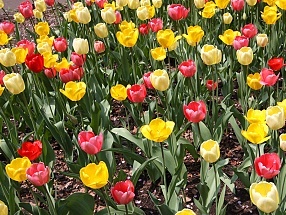 TulipsTypical Season: End April to early May (Tonami, Toyama) TulipsTypical Season: End April to early May (Tonami, Toyama) |
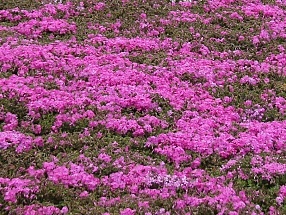 Pink Moss (Shibazakura)Typical Season: Mid April to mid May (Fujigoko) Pink Moss (Shibazakura)Typical Season: Mid April to mid May (Fujigoko) |
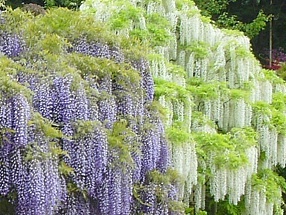 Wisteria (Fuji)Typical Season: Late April to early May (Tokyo) Wisteria (Fuji)Typical Season: Late April to early May (Tokyo) |
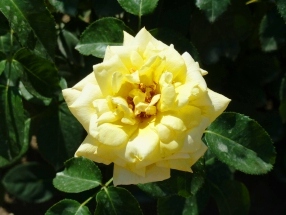 Roses (Bara)Typical Season: The month of May (Tokyo) Roses (Bara)Typical Season: The month of May (Tokyo) |
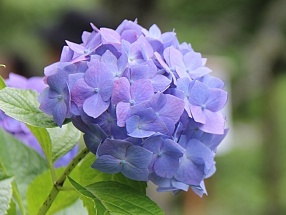 Hydrangea (Ajisai)Typical Season: Mid June to mid July (Kamakura, Hakone) Hydrangea (Ajisai)Typical Season: Mid June to mid July (Kamakura, Hakone) |
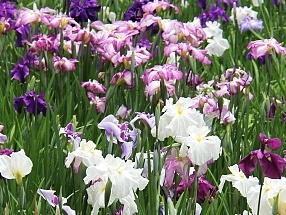 Irises (Hanashobu)Typical Season: The month of June (Tokyo) Irises (Hanashobu)Typical Season: The month of June (Tokyo) |
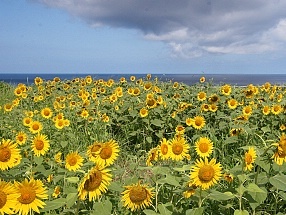 Sunflowers (Himawari)Typical Season: Early July to early August (Hokkaido) Sunflowers (Himawari)Typical Season: Early July to early August (Hokkaido) |
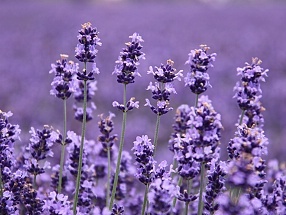 LavenderTypical Season: Mid July to early August (Hokkaido) LavenderTypical Season: Mid July to early August (Hokkaido) |
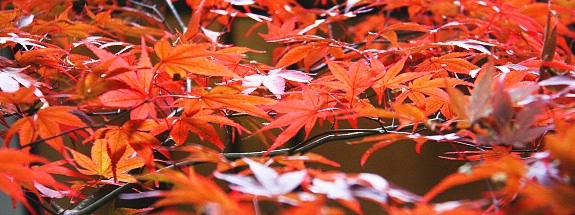 Autumn Colors (Koyo)Mid September to early December (Nationwide)
Autumn Colors (Koyo)Mid September to early December (Nationwide)
Flower related places of interest
There are many places in Japan where various species of flowers can be appreciated at different times of the year. Flower parks and botanical gardens are usually great locations for flower viewing. Some temples and shrines may also be famous for particular flowers. Below is a list of places which are popular for flower viewing.
See also our pages on cherry blossom, plum blossom and autumn color spots.
Hokkaido
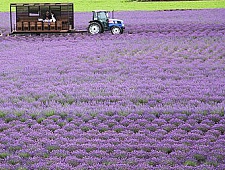 |
| Hokkaido |
| Furano Flower Fields (more details) |
| Known for: Lavender and sunflowers |
| The flower fields of Furano offer a wide variety of flowers from May to October; however, the region is most famous for its lavender which attracts large numbers of visitors every summer, when the plants are in full bloom. |
|
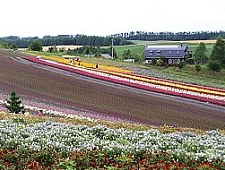 |
| Hokkaido |
| Biei (more details) |
| Known for: Lavender and various flowers |
| The rolling hills of Biei are home to multiple flower parks with various flower fields. Some can be enjoyed not only by walking along the trails, but also by renting golf or buggy carts or taking a ride on tractor-pulled wagons. |
|
Around Tokyo
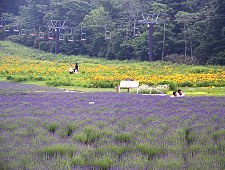 |
| Gunma Prefecture |
| Tambara Flower Park |
| Known for: Lavender |
| Tambara Flower Park is located in Gunma Prefecture. Over 50,000 lavender bushes are planted on the Tambara plateau, creating a spectacular lavender flower park in the summer. The area is a ski resort in the winter. |
|
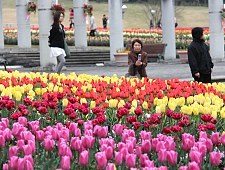 |
| Gunma Prefecture |
| Gunma Flower Park |
| Known for: Various flowers |
| Gunma Flower Park offers an extensive collection of flower varieties which bloom during different seasons, including tulips, irises and roses. |
|
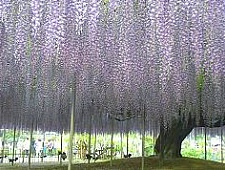 |
| Tochigi Prefecture |
| Ashikaga Flower Park (more details) |
| Known for: Wisteria |
| One of the best places to view wisteria is the Ashikaga Flower Park in Ashikaga City, Tochigi Prefecture. Ashikaga Flower Park features lots of blue, white and pink wisteria, as well as yellow laburnum (Japanese: kingusari) that look like yellow colored wisteria. |
|
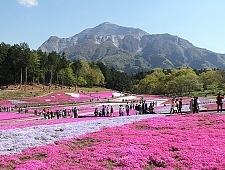 |
| Saitama Prefecture |
| Chichibu Hitsujiyama Park |
| Known for: Pink Moss |
| This park features wide fields of pink moss in almost ten varieties and colors. The flowers are strategically planted to produce delightful designs across the fields. From the northern end of the park, gorgeous views of pink moss with Mount Buko in the backdrop can be seen. |
|
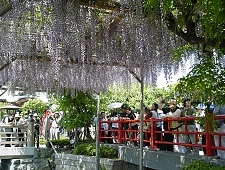 |
| Tokyo |
| Kameido Shrine |
| Known for: Wisteria |
| Kameido Shrine in Tokyo is a great place to view wisteria. Every year, thousands of people visit the shrine to appreciate the wisteria, which bloom from late April to early May. |
|
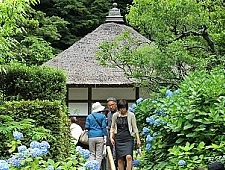 |
| Kamakura |
| Meigetsuin Temple (more details) |
| Known for: Hydrangea and irises |
| Meigetsuin is also known as “Ajisaidera”, meaning “Hydrangea Temple”. This is because hydrangea bloom in abundance at the temple during the rainy season around June, and they usually attract large numbers of visitors. |
|
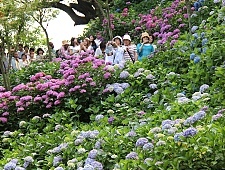 |
| Kamakura |
| Hase Temple (more details) |
| Known for: Hydrangea |
| Hasedera is famous for its huge statue of Kannon, the goddess of mercy. Every summer, huge crowds come to the temple to visit its hydrangea garden. Long queues may be expected due to the popularity of the hydrangea. |
|
 |
| Hakone |
| Hakone Tozan Railway (more details) |
| Known for: Hydrangea |
| A ride on the Hakone Tozan Railway, Japan’s oldest mountain railway, is a treat for more than just railway fans. The ride is especially beautiful in June and July when thousands of hydrangea are in bloom along the tracks and are illuminated during the evenings. |
|
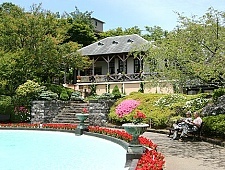 |
| Hakone |
| Gora Park (more details) |
| Known for: Roses |
| This is a western style landscape park located in Hakone, featuring a large fountain and a rose garden. Visitors can also take part in craft activities such as dried flower arrangement. |
|
 |
| Yamanashi Prefecture |
| Fuji Shibazakura Matsuri (more details) |
| Known for: Pink Moss |
| The Fuji Shibazakura Festival is perhaps the best occasion to see pink moss (shibazakura). Wide fields of lovely shibazakura combine with Mount Fuji in the backdrop on clear days to produce breathtaking scenery. Hundreds of thousands of flowers in various colors can be enjoyed at the festival grounds, which is located a short distance south of Motosuko Lake. |
|
Around Nagoya
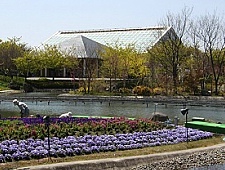 |
| Nagoya |
| Nabana no Sato (more details) |
| Known for: Cherry blossoms, roses, tulips, hydrangea, irises |
| This is a park which provides great views of seasonal flowers throughout the year. Every spring, it hosts a flower festival which is claimed to be of the largest scale in Japan. Winter illuminations are held from mid November to early March. Nabana no Sato is part of Nagashima Resort, which features the famous amusement park Nagashima Spaland. |
|
Around Osaka
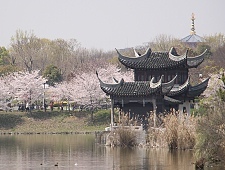 |
| Osaka |
| Tsurumi Ryokuchi Park |
| Known for: Cherry blossoms, roses, tulips |
| Tsurumi Ryokuchi Park located in Osaka is a great place to view cherry blossoms. The large park hosted the International Garden and Greenery Exposition in 1990, and features many gardens of various countries. |
|
Shikoku
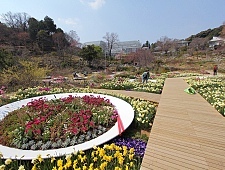 |
| Kochi |
| Makino Botanical Garden |
| Known for: Irises and various flowers |
| Makino Botanical Garden in Kochi includes extensive walking paths, outdoor parks and a greenhouse. The spacious garden has various flowers on display. |
|
Kyushu
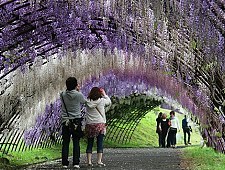 |
| Kitakyushu |
| Kawachi Wisteria Garden (more details) |
| Known for: Wisteria |
| The Kawachi Wisteria Garden is a private garden in the mountains just outside central Kitakyushu that is known for its long tunnels of pink, purple and white wisteria blossoms. The garden has become extremely popular and gets crowded with flower hunters from late April to mid May. |
|
http://www.japan-guide.com/e/e2423.htmlから取られた材料




























